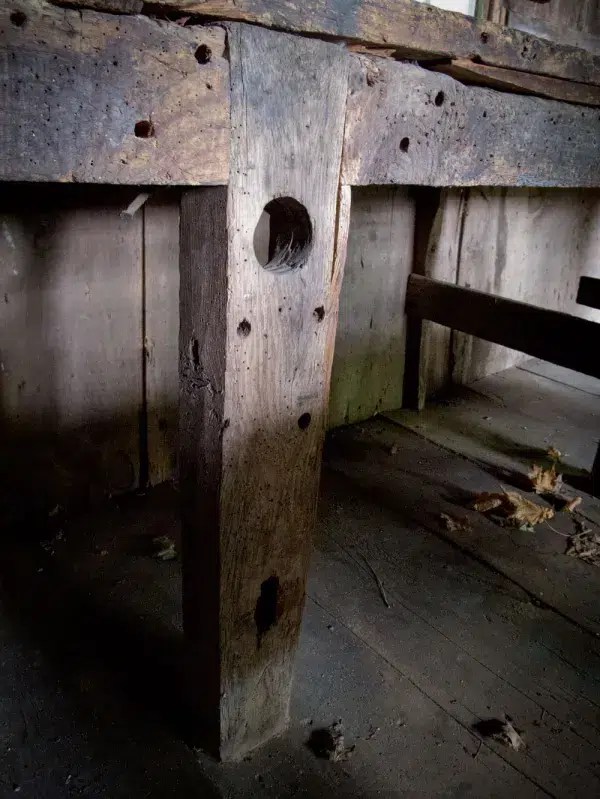
More than 10 years ago, Chris wrote about his visit to the Sampson-White Joiner Shop in Duxbury, Mass. Yesterday, the Secretary of the Interior designated the site as a National Historic Landmark (NHL) (hat tip to Timothy Babalis for this news).

This historic shop, which, according to the National Park System Advisory Board, “is the only known surviving purpose-built, eighteenth-century woodworking shop in its original location and with its fixtures intact,” was, at one point, being used by a private school as storage. Stories like this usually don’t have happy endings.
According to the 108-page nomination letter, the site meets two NHL criteria: Criterion 1, “for embodying the early American woodworking trades that helped to build the United States” and Criterion 4, “as an exceptional example of an early American joiners’ workshop, a distinct but rarely surviving architectural type.”

Luther Sampson owned the shop from 1785-1795, and Joseph White owned it from 1795-1843. To this day you can still see the shop’s original fixed workbenches which line three walls, tool racks, and more.
Check out photos (including a bench wall pierced with marking awl jab marks, depictions of sailing ships scratched into the walls and elegantly chamfered empty tool racks) and read more about Chris’s 2013 tour of the site with Michael Burry, a restoration carpenter who discovered the shop and Peter Follansbee, here.
— Kara Gebhart Uhl


that’s good news – the first time I saw it there were big wheels all over the place. Not big wheels, but Big Wheels, the plastic trikes for little kids. Glad to hear of its new status.
That’s very exciting. I drive by there all the time. Would be really fun if we could set up some demos/ classes there! What say you Mr. Follansbee?
Oh… if only walls and benches could talk. The stories they could tell. In a way, I guess they do! Saving and preserving it… at 250-ish years old… is wonderful news. Artifacts, relics and stories of everyday life from the past, helps you understand how our ancestors struggled and toiled yet led fulfilled lives. Some lessons there about a simpler life, for all of us in today’s world. Thank you all, for calling attention to it.
Such great news that such a shop has survived. Will it be restored and period tools once again fill the racks? I have a large collection of tools from that period and earlier, many with makers’ marks and the initials and names of the cabinet makers, carpenters and builders who owned and used them.
The Dominy Shop of East Hampton, NY, three generations, also survived and can be seen at The Winterthur Museum in Delaware. Many unsung heroes beginning in 1941 worked to save the tools and get a museum interested in preserving the shop, finally successful in 1957.
Thanks for letting us know about the change in status. It’s very good news.
That is a curmudgeons lair if there ever was one.
The electrified fixtures are a stain on the architecture, as with nearly all retrofits. It shouts ‘real work happened here without throw pillows’.
I’ve moved from personification of tools to buildings. Time to throw it in for the week.
In the last paragraph, you write about some pictures we could view of the shop, but this technology-challenged reader can’t see a link to them. I would also like to read about Chris’ visit, but again there isn’t a link that I can see.
Suggestions/guidance?
Click this link.
https://blog.lostartpress.com/2013/05/18/a-visit-to-the-sampson-joinery-shop-in-duxbury-mass/
Scroll tot he bottom of the entry and you will see a gallery of images. Click on the images to view them.